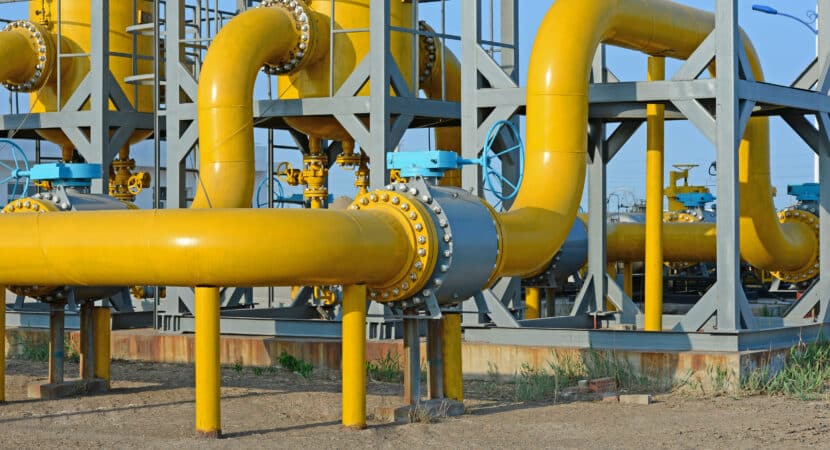
New incentives for the construction of gas and oil pipelines in the oil sector make states prosper in this area
The results of the Ukrainian war are apparently bringing new perspectives to the US oil sector. United States, which presents innovations in gas and oil pipelines
Brazil Energy Information data updated data on Gas Pipelines and Natural Gas Projects currently validated and completed.
After that, a project begins to release the approval of the Keystone XL gas pipeline and also to approve political support for the Canadian company Enbridge not to have the controversial Line 5 embargoed, which will be passed to a tunnel 170 meters under a bed of Lake Michigan.
Only in the first quarter of this year 2022, the FERC (Federal Energy Regulatory Commission) validated three projects that were intended to increase US natural gas exports via pipeline.
FERC has also already approved two projects that join LNG terminals in Louisiana. The Evangeline Pass Expansion Project, aimed at building new oil and gas pipelines in the petroleum industry, is a 1,1 billion cubic foot project owned by the Tennessee Gas Pipeline Company.
Planning includes approximately 25 kilometers of new pipeline and two new compressor stations that will supply natural gas, via pipelines, to the proposed Plaquemines LNG project in Plaquemines Parish, Louisiana.
The Alberta Xpress plan is a project owned by TC Energy and will use the volume in the Great Lakes pipeline transmission system and ANR pipeline and will include a new compressor plant in Evangeline Parish, also in the Louisiana region.
The project increases capacity from the Great Lakes offloading point on the Minnesota-Manitoba border to delivery points in the US Midwest and US Gulf Coast, evolving empty capacity for natural gas export facilities in the region. .
The project also improves domestic natural gas characteristics in these areas. The third project validated by FERC increases the volume of natural gas transportation via pipeline for the Energia Costa Azul Natural Gas Export Project in Baja California, Mexico.
TC Energy's Baja Xpress Norte Project alters existing facilities and compressor stations along its 86-mile Baja Norte pipeline.
Two other projects were validated in Florida and North Dakota last quarter. The Putnam Uplift Project on the Florida Pipeline makes it easier to deliver natural gas to a Seminole Generating Cooperative plant in Putnam County.
Additionally, there is the North Bakken Expansion Project, which will be an approximately 100-kilometer extension of the Williston Basin interstate system. The project connects to the Fronteira do Norte Oil Pipeline.
Expansion of the world's gas pipeline system dampers Paris plans
A survey released on February 1st of last year (2021) by GEM, Global Energy Monitor, showed that the increase in oil and gas pipelines in the oil sector continues the deceleration movement that has lasted for a decade, since in 2020, the volume of increase per year of oil and gas pipelines, worldwide, fell 13%, hurting the oil sector.
However, an investment of approximately US$1,3 trillion will be allocated to an expansion of around 212 km of oil and gas pipelines, ruining the proposals of the main powers of economies that intended to achieve decarbonization by the middle of the century.
According to the research carried out, if the countries act to meet the goals of the Paris Agreement, these assets of the oil sector would be seriously threatened.
Leading the list is China, with around US$173 billion invested in pipelines (86%) and oil pipelines (14%). Successively, comes the USA, with approximately US$110 billion, divided almost equally between gas and oil pipelines in the oil sector. Behind comes India, with around US$104 billion, 99% of which is invested in gas pipelines. After these countries comes Brazil, which is sixth on the list, behind Russia, US $86 billion, where 100% is in gas pipelines and Australia US $43 billion, also 100% in gas pipelines, in the commodity sector.












Air Force F-16 fighters…
True friend, what they shot down were…
Air Force F-16 fighters…
I would like to know what planet you live on…
Air Force F-16 fighters…
Everything is fine, 100-year secrecy,…
Air Force F-16 fighters…
Well... It's flying scrap... Typical...
Air Force F-16 fighters…
Which genocide are you talking about? Than…
I don't want to go at all...
I want to go to work in the Netherlands
You fool me, I like it. After…
But it must make a noise...
Changing times
Hello, I would like to register
Good evening, I would like to know more about…
I am a professional plasterer in the Drywall lining area…